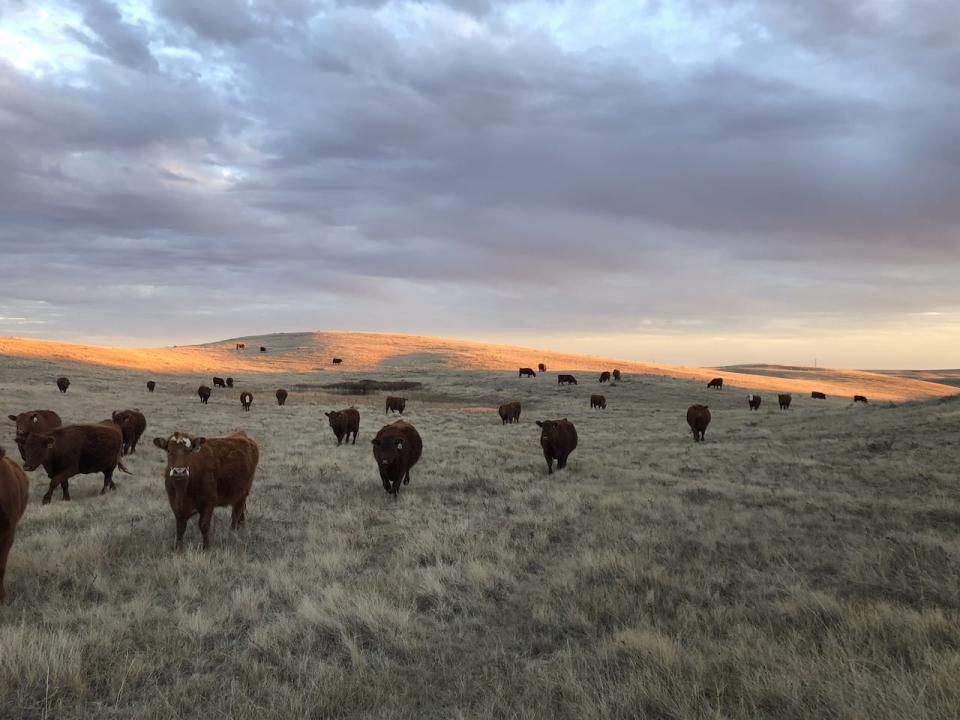Average Alberta beef farmer making less than $50,000 after costs, says new report
Higher prices for steaks and burgers this barbecue season don't mean big profits for beef farmers, according to a new report from the University of Calgary's School of Public Policy.
The report says that in the last 30 years, the average beef farmer hasn't made more than $50,000 in profits annually, even though the average beef farm's asset base is more than $2 million.
"The fact that the [cost of] sirloin steaks is very high in the grocery store, that's got a lot to do with the cost of getting the sirloin steak there," said report author Derek Brewin.
"It's not really that anybody is taking a real big share.… It's expensive to get that steak there, just in time, in the right condition for the consumer."
The report says higher costs for feed and pastureland are putting a strain on ranchers' pocketbooks.
Brewin, a professor of agribusiness and agriculture economics at the University of Manitoba, said high feed costs are caused by strong worldwide demand for grains and insufficient supply.
"In Canada, that's generally good news because there's more grain farmers than there are beef farmers," he said.
"Still, those beef farmers at the first step of the supply chain, they're barely making any excess profits, even though [beef] prices are much higher."
His report says the cost of grazing cattle is up because cropland is more valuable than pastureland, and some landowners are transitioning their properties away from grasslands.

'There's only so much we can do'
Brad Osadczuk has a 500 to 600 herd near the hamlet of Jenner, about 200 kilometres east of Calgary.
His expenses are at an all-time high.
"We run as lean and as mean as we can," said Osadczuk. "We'll cut corners and try to save costs with everything we do. But there's only so much we can do."
"Whether it's feed for our cattle, medicine for our cattle, fence post wire.… It all adds up."
Data from Statistics Canada shows Alberta's total cattle herd declined by more than one per cent from January 2023 to January 2024.
Osadczuk said because of drought and cost pressures, he's been forced to cut the size of his herd by 15 to 20 per cent in recent years.
He is optimistic better moisture conditions will help bring down his costs this year, because if spring rains continue, he won't need to buy as much feed.
The University of Calgary report calls for continued investment in farming research, to develop new cost-saving technologies for cattle ranchers.
Brewin also said Canada needs to maintain good trade relations in Asia and Africa, where consumer demand for beef is expected to grow.


